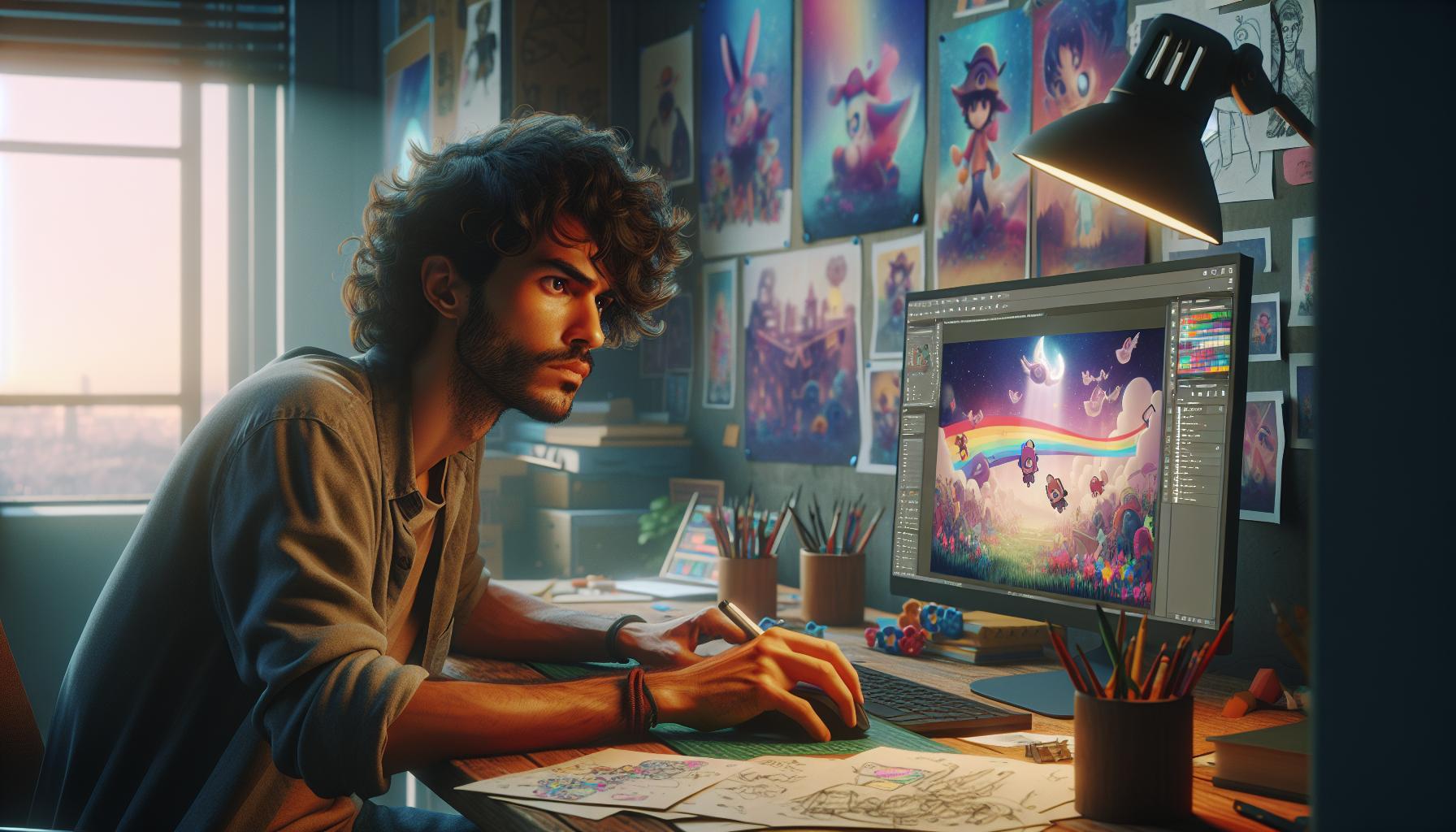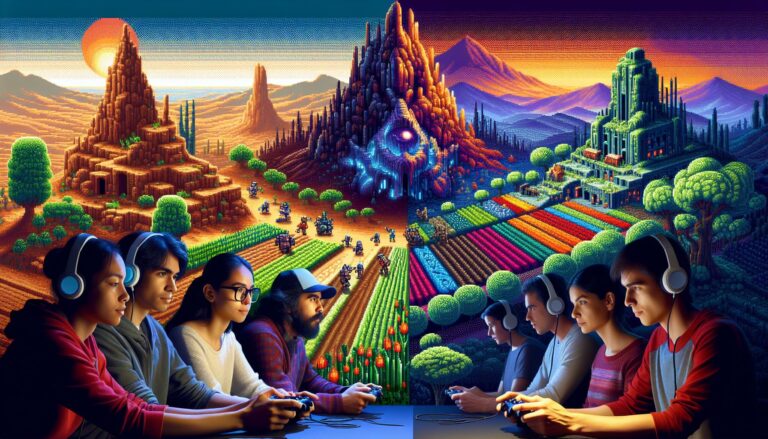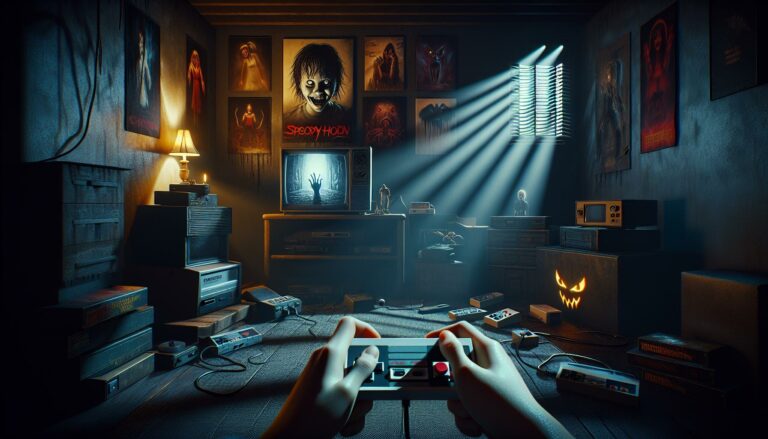Creating indie games has never been more accessible or exciting. With the rise of digital distribution platforms and powerful game development tools, anyone with a passion for gaming can turn their ideas into reality. I’ve dived into this vibrant world and discovered that making indie games is not just about coding—it’s about storytelling, creativity, and innovation.
In this article, I’ll share my insights on the essential steps to embark on your indie game development journey. From brainstorming your concept to choosing the right tools and marketing your game, I’ll guide you through the process. Whether you’re a budding developer or just curious about the indie scene, let’s explore how you can bring your unique vision to life and potentially captivate players around the globe.
Key Takeaways
- Understanding Indie Games: Indie games prioritize creativity and innovation, allowing developers to explore unique storytelling and artistic styles without major publisher constraints.
- Planning is Essential: Begin with a well-defined game concept and a Game Design Document (GDD) to guide your development process and maintain focus on your goals.
- Choose the Right Tools: Select game engines and software that match your project’s needs, such as Unity or Unreal Engine for development, and Photoshop or Blender for graphics.
- Develop Engaging Mechanics: Focus on creating a compelling core gameplay loop, balancing difficulty, and incorporating elements that enhance replayability to retain player interest.
- The Importance of Testing: Conduct thorough playtesting and gather player feedback to refine your game mechanics and design, ensuring an enjoyable user experience.
- Effective Marketing Strategies: Build an online presence and engage with your community while employing strategic launch techniques to generate buzz and maintain interest post-launch.
Understanding Indie Games
Indie games refer to video games created by individuals or small teams without significant financial backing from large publishers. Typically, these developers focus on creative freedom, innovation, and unique storytelling rather than commercial success alone. This independence fosters an environment for experimentation, allowing developers to explore unconventional ideas and gameplay mechanics.
The indie game landscape has evolved significantly with the rise of digital distribution platforms. Platforms like Steam, itch.io, and the Epic Games Store provide accessible avenues for developers to reach players globally. Thus, developers can publish their creations without the need for traditional publishing agreements.
Indie games often stand out due to their artistic styles and narratives. Many indoor projects emphasize personal stories or social themes, offering players a fresh perspective. Successful examples include Undertale, known for its innovative mechanics and emotional depth, and Hollow Knight, celebrated for its art design and engaging gameplay.
Understanding indie games involves recognizing their unique position in the gaming industry. They represent the blend of passion, creativity, and innovation, showcasing what small teams can achieve in the dynamic world of game development.
Planning Your Game


Planning serves as a crucial foundation in indie game development. It shapes the entire project and enhances focus throughout the process.
Defining Your Concept
Defining your concept sets the direction for your game. Start by identifying the genre, theme, and core mechanics. Research similar games to understand what works and what doesn’t. Consider your target audience; knowing who will play your game influences design choices. Brainstorm multiple ideas and shortlist those that resonate most with your vision. For example, if you’re drawn to puzzle mechanics, explore innovative ways to engage players, such as incorporating unique storytelling elements or unexpected challenges.
Creating a Game Design Document
Creating a game design document (GDD) organizes your thoughts and ensures clarity. A GDD typically includes sections on gameplay mechanics, story, characters, art style, and sound. Specify the game’s objectives, challenges, and essential features. For instance, include details about player characters and how they interact with the environment. Outline your timeline and budget, incorporating milestones for different phases of development. Regularly updating the GDD helps track progress and adjust plans as needed. Use it as a reference tool throughout the development cycle to maintain focus and coherence.
Game Development Process

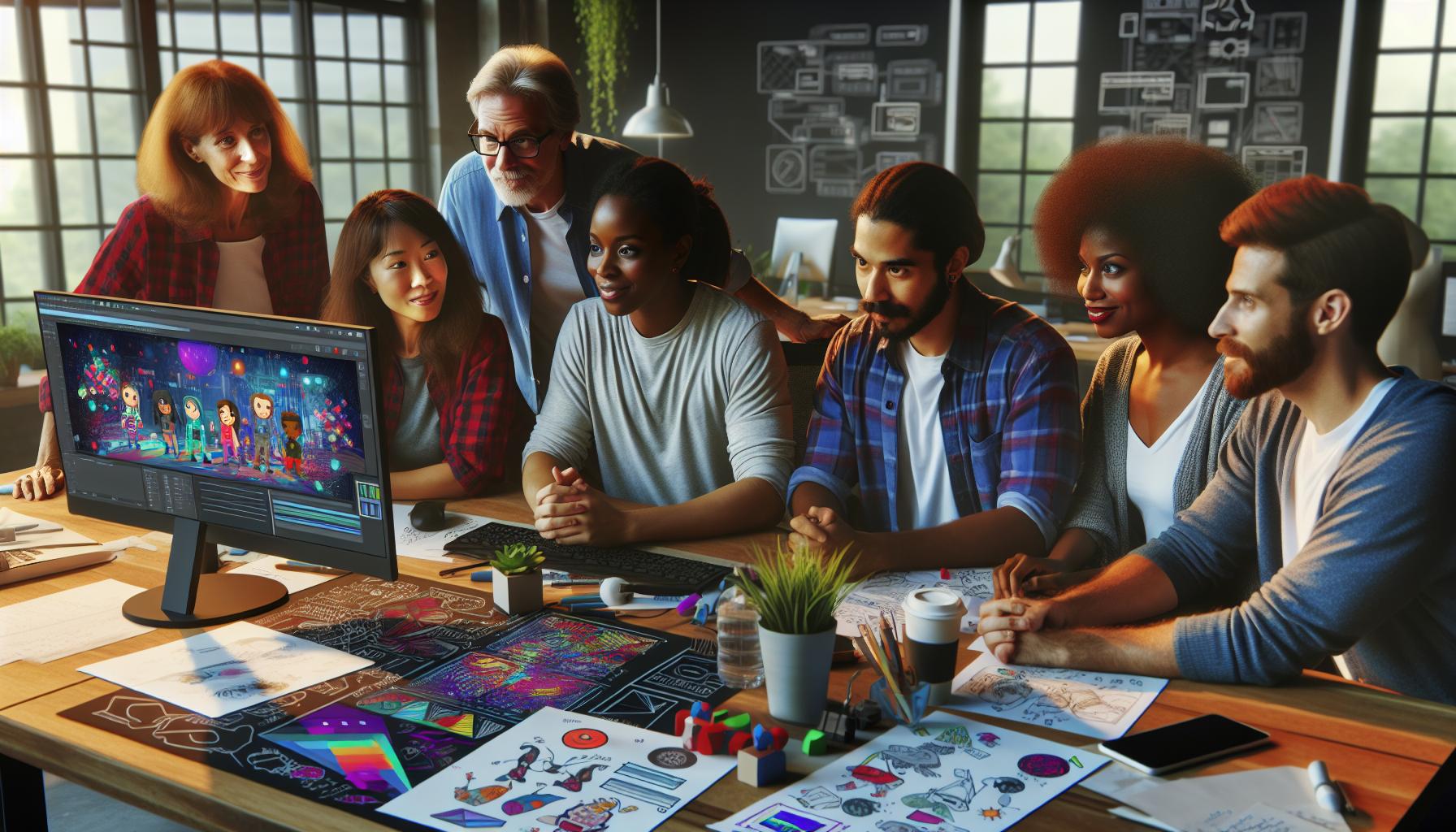
Indie game development consists of several key steps, each contributing to the final product. Understanding these stages helps streamline the process and enhances creativity.
Choosing the Right Tools and Software
Selecting appropriate tools and software significantly impacts development efficiency. I often consider the following software options:
- Game Engines: Unity and Unreal Engine provide robust frameworks for 2D and 3D games. Both support a range of platforms and offer extensive communities.
- Graphics Software: Adobe Photoshop and GIMP are excellent for creating 2D art assets. Blender serves well for 3D modeling.
- Sound Editing Tools: Audacity and FL Studio help capture and edit sound effects and music.
- Coding Language: C# in Unity or C++ in Unreal has direct influence on gameplay mechanics and performance.
Evaluating your specific project needs influences the choice of tools. Familiarity with software facilitates smoother development.
Developing Game Mechanics
Establishing engaging game mechanics drives player interest and retention. I focus on these critical aspects:
- Core Gameplay Loop: Design fundamental actions that players repeat, creating a rhythm for the game, such as collecting items or defeating enemies.
- Balancing Difficulty: Adjust challenge levels to maintain player engagement without causing frustration. Gradually increase difficulty to encourage skill development.
- Feedback Systems: Provide clear feedback for player actions, such as visual effects or audio cues, to enhance immersion and satisfaction.
- Replayability: Incorporate elements like unlockable content or branching storylines that encourage players to engage with the game multiple times.
Iterative testing and player feedback refine mechanics, ensuring they align with the intended experience.
Art and Sound Design
Art and sound create an immersive atmosphere that connects players with the game. I pay close attention to:
- Visual Style: Establish a unique art direction that complements the game’s theme. Consistency in style enhances visual appeal and brand identity.
- Character Design: Create memorable characters with distinct personalities and designs. This helps foster a deeper connection with players.
- Soundtrack: Compose or source music that fits the game’s mood. The right soundtrack enhances emotional engagement during gameplay.
- Sound Effects: Utilize high-quality sound effects to make actions feel impactful, improving realism and enjoyment.
Combining compelling art and sound design enriches the overall gaming experience, making the project stand out in the indie market.
Testing and Iteration
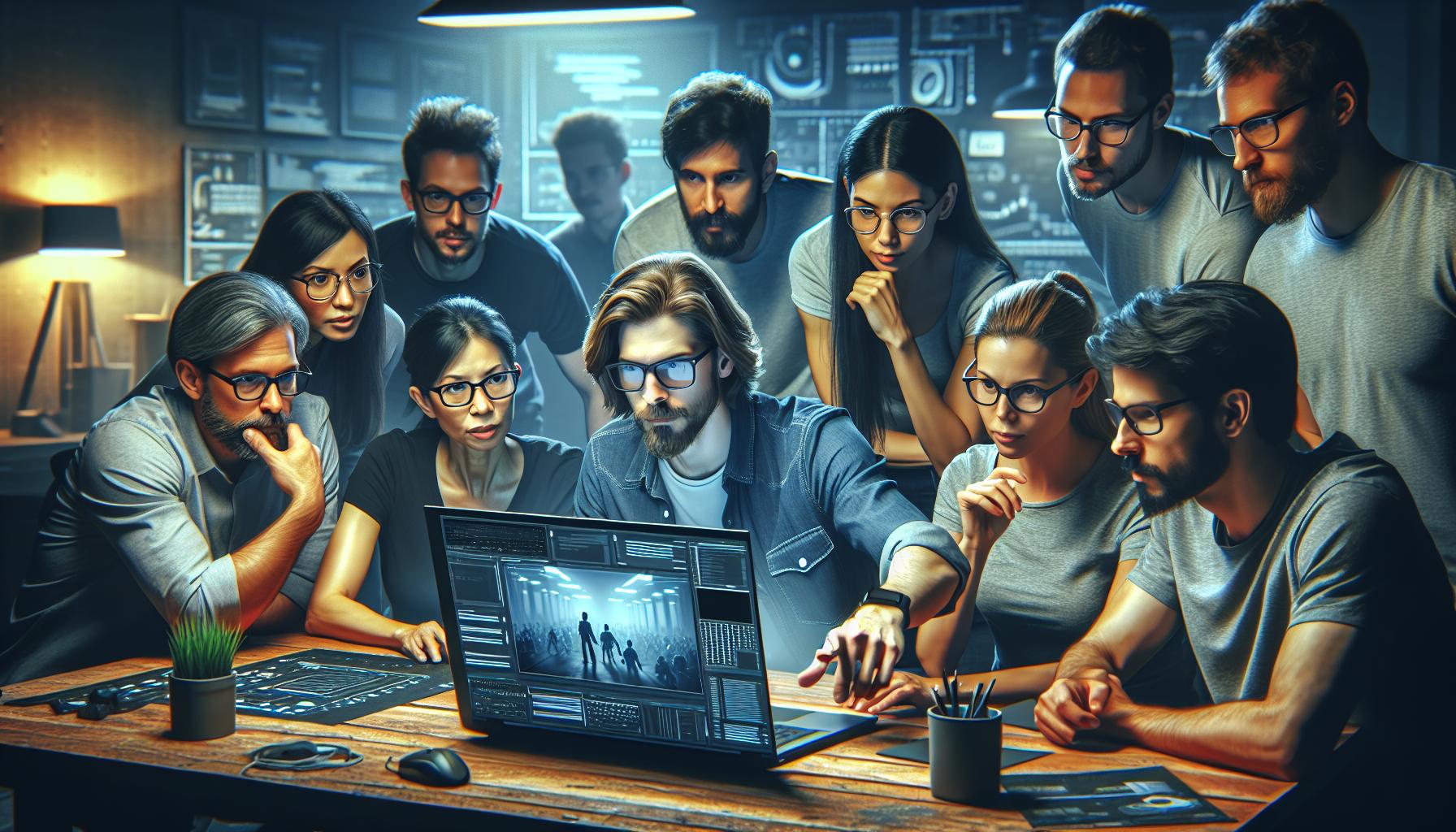
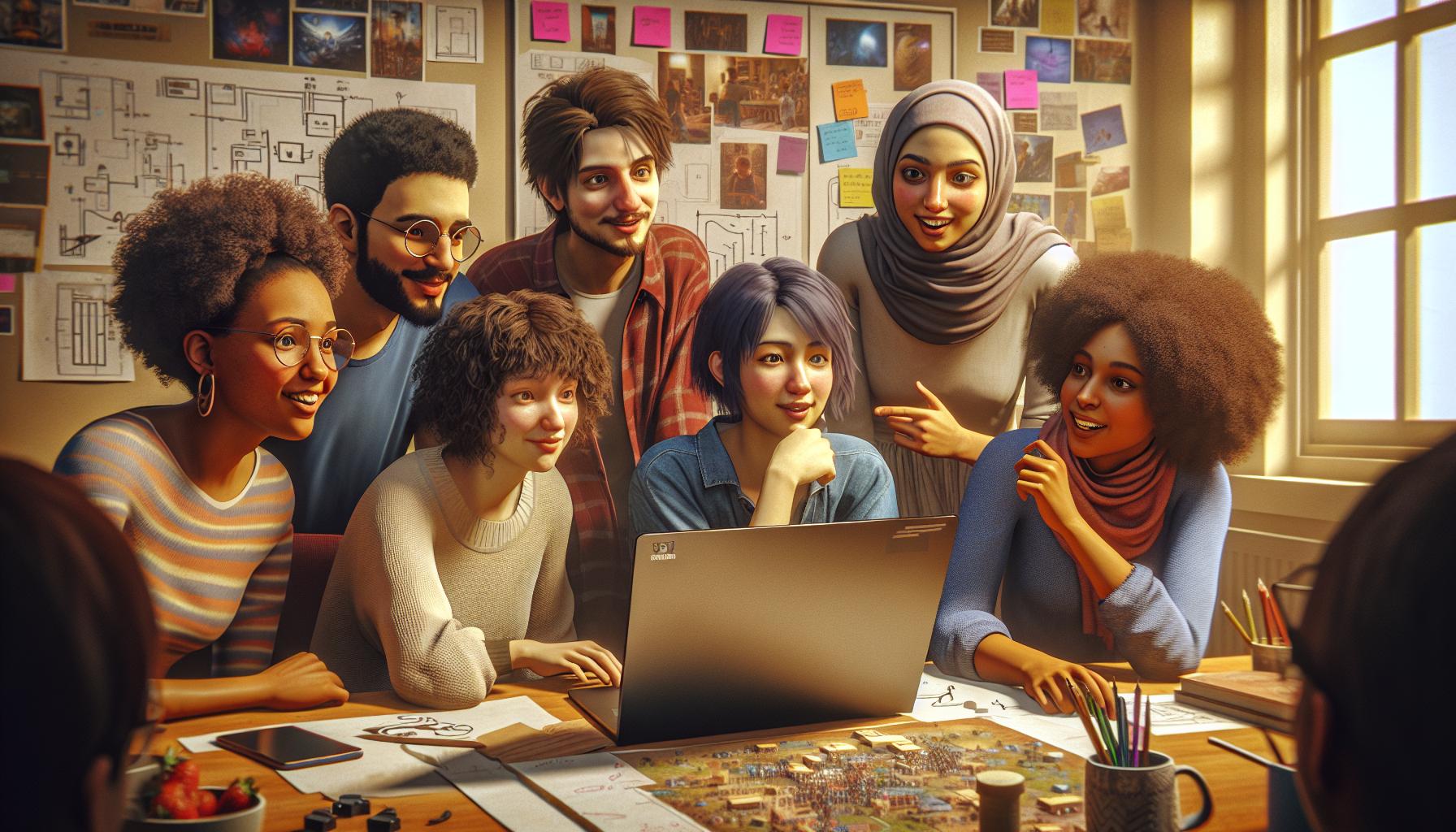
Testing and iteration are critical moments in indie game development. These processes ensure the game functions as intended and provides an enjoyable experience for players.
Playtesting Your Game
Playtesting involves having real players interact with the game before its official release. It reveals strengths and weaknesses in gameplay, mechanics, and design. I often enlist friends, fellow developers, or target audience members to conduct these sessions. I observe players to identify confusion, difficulty spikes, or unengaging elements. Conducting multiple playtesting sessions allows for iterative improvements based on player interactions.
Gathering Feedback
Gathering feedback is essential for refining the game. I create surveys or hold discussions to collect player input on various aspects, like story, mechanics, and overall enjoyment. I ensure that questions are clear and concise, allowing players to express their thoughts freely. Analyzing this feedback enables me to prioritize changes that enhance player experience. Incorporating player suggestions effectively can significantly elevate the game’s quality and satisfaction level.
Marketing Your Indie Game
Marketing plays a vital role in the success of an indie game. To reach players effectively, developers must focus on building an online presence and employing strategic launch techniques.
Building an Online Presence
Building an online presence establishes visibility and community engagement. Developers can start by creating a dedicated website that showcases their game, including trailers, screenshots, and regular blog updates. Maintaining active social media profiles on platforms like Twitter, Facebook, and Instagram fosters interaction with potential players and fellow developers. Utilizing platforms such as Discord for community building allows for direct communication and feedback from enthusiasts.
Additionally, I recommend creating engaging content, such as behind-the-scenes development videos, development blogs, or podcasts. These formats create excitement and provide insights into the game’s creation, allowing players to form a connection with the project. Participating in gaming forums and communities can also enhance visibility and establish credibility within the indie game space.
Strategies for Launching
Launching an indie game requires strategic planning to maximize reach and impact. I suggest setting a release date well in advance while maintaining a consistent development update schedule leading up to the launch. This anticipation can significantly boost initial interest.
Utilizing press releases and outreach to gaming journalists increases exposure. Developers can provide early access or beta testing opportunities to select influencers and reviewers, generating buzz around the release. Participating in gaming conventions, festivals, and online events creates networking opportunities and enhances visibility.
Creating a launch trailer that highlights core gameplay and unique elements captures potential players’ attention. Offering promotional pricing during the launch period can incentivize purchases. Post-launch, I recommend actively engaging with the community, responding to feedback, and continuously promoting updates, which helps maintain momentum and player interest.
Conclusion
Creating indie games is an exciting journey that combines creativity and technical skills. With the right tools and a solid plan, anyone can bring their unique vision to life. The indie game scene thrives on innovation and storytelling, allowing developers to explore new ideas without the constraints of big publishers.
As you embark on this adventure remember that playtesting and community engagement are vital. They not only enhance your game’s quality but also build a loyal player base. Embrace the process and don’t be afraid to experiment. The indie gaming world is waiting for your voice and imagination. So go ahead and start crafting your masterpiece.

